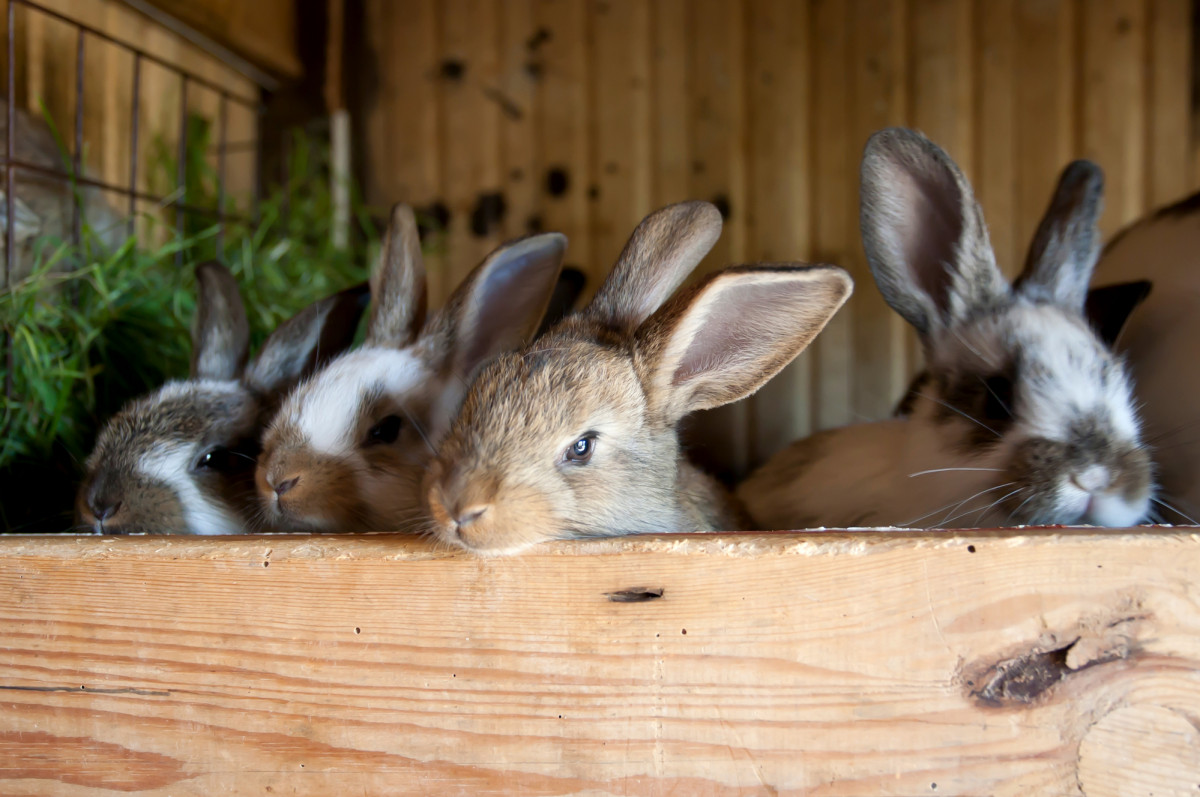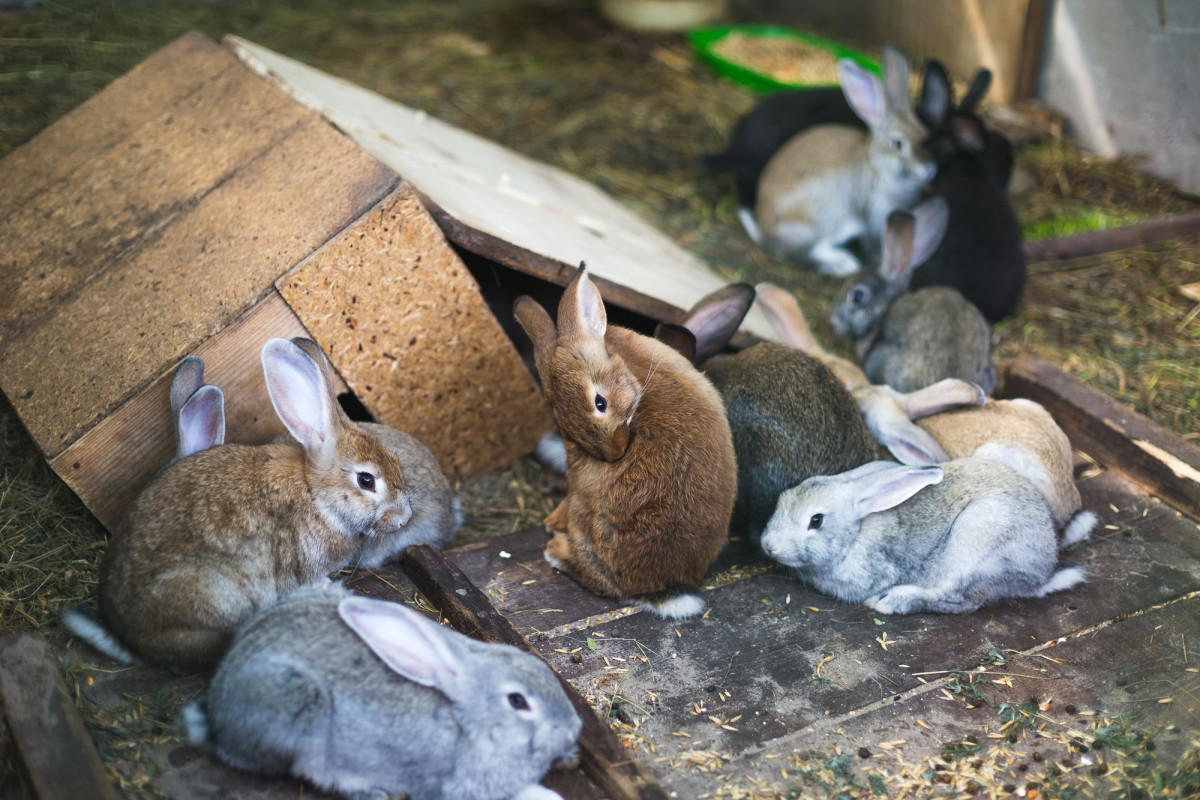How do rabbits see? Their short sight means that they are better able to see things with either eye at about 60 degrees than from the side, and their vision is much better from a distance.
Rabbits use their rear vision to recognize the movement of predators and warn themselves of danger. The short sight is natural to evade predators, and they use it to spot the movement of prey and other animals. Read on to discover more about how rabbits see.

Binocular vision
Although many mammals possess binocular vision, rabbits actually only have a small range of field of view. While they have good vision, they have two small blind spots: a 10-degree space in front of and behind their eyes.
The reason for this is that rabbits are prey animals, so they do not need the greatest depth of field to avoid being eaten. The other advantage is that rabbits can see things up close without straining their eyes, which is very important when facing predators.
The difference between rabbits and humans is that rabbits’ eyes are situated on opposite sides of their heads. This means that they have a much wider field of view than humans do.
This is essential for rabbits to avoid predators, and it also helps them judge distance and speed. Unlike humans, rabbits use this ability to protect themselves from predators. Some humans, however, think that rabbits taste delicious.
In addition to this, rabbits’ eyes also have a wide band of cones on the retina that enable them to see objects around them clearly. In addition, they do not need to look directly at an object to see it clearly.
This allows rabbits to detect an attacker much more easily. Another difference between rabbits and humans is that rabbits have a blue streak in their retina that helps them see objects in the dark. This blue streak allows light from above to reach this part of the retina. This feature makes it possible for rabbits to spot predators more easily.
While humans have the ability to see the full range of colors, rabbits cannot perceive the full spectrum of colors. A rabbit’s central retina is made up of two types of cones, the peripheral and central.
The centralis receives red, blue, and green wavelengths. A rabbit’s centralis is smaller than that of a human’s, so their vision is slightly different. As a result, rabbits can recognize people and objects around them by smell and voice, but their vision is far from perfect.
Color blindness
Although the term color blindness in rabbits sounds alarming, it’s not actually true. Rabbits can still perceive color, but their abilities to perceive and distinguish colors are much reduced than that of humans.
Our eyes have three kinds of photoreceptors, rods, green and blue, whereas rabbits only have two. Interestingly, we have the same amount of rods and cones in our eyes, though their peak density is less than half of that of humans.
Humans have three types of cones – green, blue, and red – and these help with detecting different wavelengths of light. As humans have three different kinds of cones, rabbits only have two, which means that they have two-color vision. As such, rabbits can’t detect colors in the dark. The difference between humans and rabbits is based on the number of cones in each eye.
Because rabbits have more green cones than blue, they are not color-blind, but they can’t differentiate colors that humans can. Unlike us, rabbits can distinguish between lines as small as 3/6 of a degree, but they struggle to differentiate them when the lines are 1.5 mm apart. Rabbits’ vision is excellent for their needs, but it’s important to remember that their eyesight is limited.
This condition affects both the way a rabbit sees and how they interact with the world around them. Rabbits have eyes that are situated on the side of their head.
This allows them to see 360 degrees around them, which is useful for avoiding predators. Rabbits’ eyes can also be used for surveillance and warning. Their rear vision is also very effective in warning rabbits of a predator creeping up behind them.
In humans, we tend to recognize colors through their innate behavior. Rabbits often use the color red to express their affection for us. Red objects are stimulating, while blue is relaxing.
This is why they tend to choose blue objects when they are sick or depressed. Interestingly, rabbits also tend to recognize colors when they are affectionate. So it is important to remember that rabbits are sensitive and emotional animals. So it’s possible they see color differently than humans.

Field of vision
Rabbits are monocular, so they only use their eyes to see and do not have binocular vision. But, they do have some advantage over monocular vision. They can process objects from a wide variety of angles, including at night. They can also see colors, but are not as good at judging distance. To compensate for their low vision, rabbits use a technique called parallax to judge depth.
While humans can see objects in three dimensions, rabbits are unable to distinguish faces. The central blind spot is too small to see things at a distance. This blind spot prevents them from acquiring primate-like depth perception.
To compensate for this, they have large, spoon-shaped ears. And if a predator suddenly jumps out at them, they are unlikely to hang around to fight them. Luckily, rabbits’ eyes are designed for this very purpose.
A rabbit’s nose is the most sensitive instrument in its body, moving to breathe and to recognize odors. Their convex eyes cover up to 300 degrees of space, far beyond the human visual field.
It also protects them from attacks on the ground or in the air. The only blind spot in a rabbit’s vision is its muzzle, which makes it easy for it to fall for food lying in front of it. That’s why rabbits position their heads sideways when they are feeding, so their eyesight can be enhanced.
Compared to humans and cats, rabbits have better eyesight. While the eyesight of a cat is better, rabbit’s is still far from that of a human. This makes them rely on other senses, including their smell and hearing, for example.
If they cannot see, they’ll have to rely on their sense of smell and hearing to find their way through the dark. So, rabbits have a very poor visual field, but they make up for it by using other senses to get around.
The retina is another important component of the rabbit’s eye. The rabbit’s retina has a greater ratio of rods to cones than that of a human. The result is that rabbits have better night vision in low light conditions. However, they are less sensitive to colors than humans. And, even though their vision is more advanced, the low-light image of a rabbit’s eye is less clear than a human’s.
Distance perception
The first step to understanding distance perception in rabbits is to understand how they judge distances. Rabbits’ ability to judge distances is based on parallax, or the difference in size between objects close to them and those far away.
To judge distances, rabbits use parallax to bobble their heads and scan objects. They do not use depth perception to determine distance, but rather rely on the relative sizes of objects to estimate distances.
The difference between human vision and that of a rabbit is apparent in the way it perceives colours. Unlike humans, rabbits’ eyes are built to excel in low-light situations. This gives them an advantage over nocturnal and diurnal predators. This means that a rabbit will notice an object that is far away better than one that is close up. Hence, their vision is blurry up close.
Another difference between humans and rabbits relates to depth perception. While humans have great depth perception, rabbits are unable to do the same. Their two eyes only share about 30 degrees of visual field.
However, this does not affect their ability to measure distance, and this makes them excellent at activities that require a good depth perception. To gauge distance, rabbits nod up and down. This is because their vision does not overlap.
While we humans have perfect vision, rabbits are limited in their ability to see people. They don’t twitch their eyes to recognize humans, and even if they can’t see faces, they can recognize the sounds of voices, scent, and body shapes.
As a result, they are more likely to notice airplanes than people. Then, they can be frightened by these changes in appearance. It’s a wonder how rabbits can perceive distances.
Another difference between humans and rabbits is their field of vision. While humans can see objects in front of them, rabbits don’t have the same degree of vision.
Compared to humans, rabbits can see objects from great distances, but their field of vision is limited. Fortunately, they are very good at detecting predators even at long distances. However, they do have issues with depth perception. These issues make rabbits less effective at spotting predators.

Hi! I’m Lala, and I’m the owner of RabbitLala.com. When I’m not writing about rabbits, I enjoy traveling, trying out new recipes and enjoying my hobbies.
I’ve always loved animals, so it was no surprise when I started a website devoted to one specific animal: rabbits! Rabbits are amazing creatures, and there’s so much to learn about them.
I love traveling and trying out new recipes, and my hobbies include crocheting and painting.
